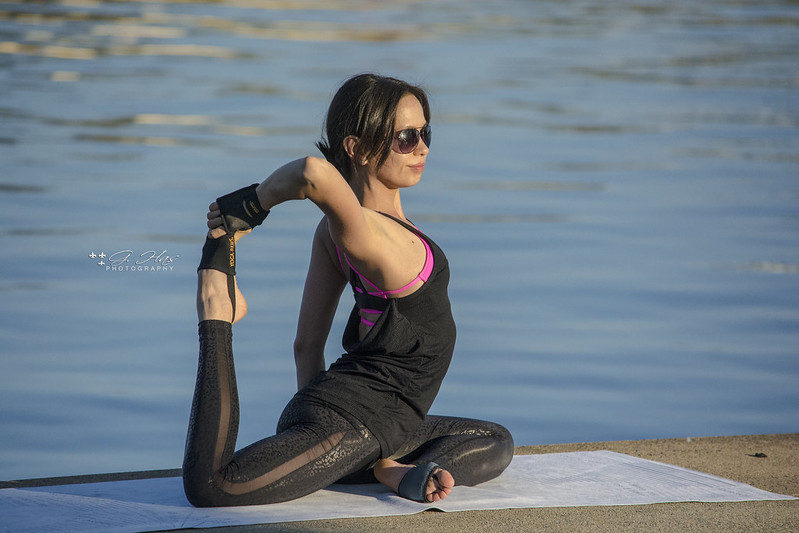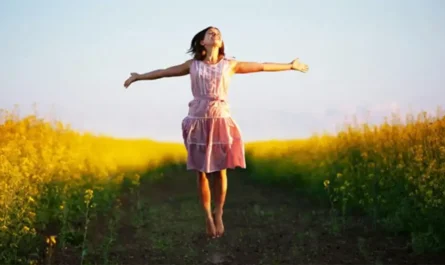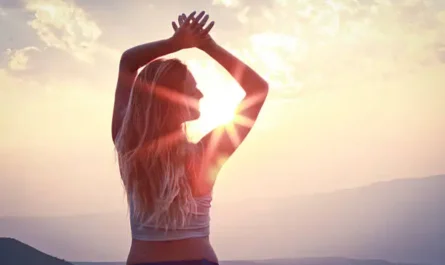Introduction
Yoga has long been celebrated for its physical, mental, and emotional benefits, helping practitioners build strength, flexibility, and balance. But beyond these benefits, yoga offers something even deeper: a path to body awareness and self-acceptance. At its core, yoga is about connecting with oneself and honoring the body as it is in the present moment. By focusing on mindfulness, breath, and gentle movement, yoga encourages individuals to cultivate appreciation and acceptance of their bodies.
This article explores yoga poses that enhance body awareness and promote self-acceptance. These gentle, accessible poses are suitable for all body types and experience levels, inviting everyone to embrace their unique shape and abilities. Whether you’re new to yoga or a seasoned practitioner, these poses can help you connect more deeply with yourself and find peace in your body.
The Role of Yoga in Body Awareness and Acceptance
Body awareness is the ability to sense and recognize your physical body, its position, and how it moves. Practicing yoga helps increase this awareness by encouraging us to notice subtle sensations, our breath, and the movement of our muscles. Through regular practice, we begin to appreciate our body’s capabilities and let go of judgments or comparisons.
Body acceptance, on the other hand, is about respecting and appreciating the body as it is, without the need to change or criticize it. Yoga fosters body acceptance by inviting practitioners to focus on the present, honor their body’s limitations, and embrace their uniqueness. Together, body awareness and acceptance form a powerful foundation for self-love and confidence.
Tips for Practicing Body-Positive Yoga
Before diving into the poses, here are some helpful tips to keep in mind for a body-positive yoga practice:
- Listen to Your Body: Yoga is about connecting with yourself, not pushing beyond your limits. Move slowly and listen to what your body needs in each moment.
- Breathe Deeply: Deep breathing helps calm the mind, relax muscles, and enhance body awareness. Focus on your breath throughout your practice to stay grounded.
- Avoid Comparison: Yoga is an individual journey, and each body is different. Focus on your own practice, and avoid comparing yourself to others.
- Use Props if Needed: Props like blocks, straps, or bolsters can help make poses more accessible and comfortable. They are tools for support, not a sign of limitation.
- Practice Kindness: Speak kindly to yourself as you move through each pose, reminding yourself that yoga is about self-love and acceptance.
8 Gentle Yoga Poses for Body Awareness and Acceptance
Each of the following poses is selected to help increase body awareness and foster self-acceptance. They are gentle, accessible, and suitable for all shapes and sizes.
1. Mountain Pose (Tadasana)
Mountain Pose may look simple, but it’s a powerful pose for grounding and body awareness. This foundational standing pose invites you to focus on posture, balance, and alignment.
How to do it:
- Stand with your feet hip-width apart, grounding down through all four corners of your feet.
- Engage your legs and gently lift your chest, feeling your spine lengthen.
- Relax your shoulders, keeping your arms by your sides with palms facing forward.
- Close your eyes if comfortable, and take a few deep breaths, noticing the sensations in your body and feeling stable and grounded.
Benefits:
Mountain Pose enhances awareness of posture and alignment. It encourages confidence and a sense of presence, helping you feel connected to the earth and rooted in your body.
2. Child’s Pose (Balasana)
Child’s Pose is a resting pose that promotes relaxation, surrender, and self-compassion. This gentle forward fold allows you to listen to your body’s needs and feel grounded.
How to do it:
- Kneel on the floor with your big toes touching and knees apart.
- Sit back on your heels, then reach your arms forward and lower your chest to the floor.
- Rest your forehead on the mat, close your eyes, and breathe deeply, allowing your body to relax.
Benefits:
Child’s Pose encourages gentle stretching in the back, shoulders, and hips, allowing you to relax and connect with your breath. It’s a comforting pose that promotes self-acceptance and compassion.
3. Cat-Cow Pose (Marjaryasana-Bitilasana)
Cat-Cow is a gentle flowing movement that brings flexibility to the spine and fosters body awareness. Moving through this pose helps you tune into the sensations in your back, shoulders, and hips.
How to do it:
- Start on your hands and knees in a tabletop position, with wrists under shoulders and knees under hips.
- Inhale as you arch your back, lift your head and tailbone, coming into Cow Pose.
- Exhale as you round your spine, tucking your chin and tailbone in, coming into Cat Pose.
- Flow between these two poses with your breath, moving slowly and mindfully.
Benefits:
Cat-Cow improves flexibility in the spine and helps release tension in the back. This gentle flow increases body awareness by allowing you to feel each part of your spine and encourages a balanced, harmonious rhythm with your breath.
4. Seated Forward Fold (Paschimottanasana)
Seated Forward Fold is a gentle stretch that enhances body awareness by inviting you to listen to your limits. It’s a grounding pose that encourages calmness and introspection.
How to do it:
- Sit with your legs extended in front of you, keeping your back straight.
- Inhale, lengthen your spine, and reach forward with your arms.
- Exhale as you fold forward from the hips, reaching toward your feet. Go only as far as feels comfortable.
- Relax your head and neck, and breathe deeply, noticing any sensations in your body.
Benefits:
This pose stretches the hamstrings, lower back, and spine. It helps cultivate patience and acceptance, as you work within your body’s range of motion rather than forcing a deep stretch.
5. Warrior II (Virabhadrasana II)
Warrior II is an empowering pose that encourages strength and balance. It promotes awareness of your body’s alignment and builds confidence and focus.
How to do it:
- Stand with your feet wide apart, and turn your right foot out 90 degrees.
- Bend your right knee so it’s above your ankle, and extend your arms out to the sides, parallel to the floor.
- Look over your right hand, relax your shoulders, and engage your core.
- Hold for a few breaths, then switch sides.
Benefits:
Warrior II strengthens the legs and core, and enhances body awareness by focusing on alignment and balance. It’s a grounding, powerful pose that fosters a sense of stability and inner strength.
6. Tree Pose (Vrksasana)
Tree Pose is a balancing pose that increases focus, stability, and self-awareness. Balancing in this pose requires concentration and mindful engagement with your body.
How to do it:
- Stand in Mountain Pose, shift your weight onto your left foot, and place your right foot on your left inner thigh or calf.
- Bring your palms together at your heart, or raise your arms overhead if comfortable.
- Focus on a point in front of you, and breathe deeply, feeling grounded and centered.
Benefits:
Tree Pose enhances balance and builds a sense of focus and calm. It reminds you of the importance of grounding, and it encourages a connection between mind and body, fostering appreciation for stability and self-assurance.
7. Legs Up the Wall Pose (Viparita Karani)
Legs Up the Wall is a restorative pose that calms the nervous system and promotes relaxation. This pose gently stretches the hamstrings and lower back and allows you to let go of stress.
How to do it:
- Sit with one hip close to the wall, then lie back and extend your legs up the wall.
- Rest your arms by your sides or on your belly.
- Close your eyes, breathe deeply, and allow your body to relax.
Benefits:
This pose relieves tension in the legs, back, and mind. It’s ideal for relaxation and promotes body awareness by allowing you to feel grounded and weightless, fostering a sense of calm and acceptance.
8. Corpse Pose (Savasana)
Corpse Pose, often practiced at the end of a yoga session, is the ultimate relaxation pose. Savasana invites you to be still, fully present, and at peace with your body.
How to do it:
- Lie on your back with your arms by your sides, palms facing up, and legs relaxed.
- Close your eyes and breathe naturally, letting go of any tension.
- Allow yourself to completely relax, observing any sensations in your body without judgment.
Benefits:
Savasana promotes deep relaxation, mindfulness, and self-acceptance. It’s a moment to honor your body and the practice you’ve completed, fostering gratitude and a sense of wholeness.
Creating a Gentle, Body-Positive Yoga Routine
To enhance body awareness and acceptance, consider combining these poses into a gentle routine. Here’s a suggested sequence:
- Start with Mountain Pose to center yourself and connect with your breath.
- Move into Cat-Cow to warm up the spine.
- Flow into Warrior II to build strength and balance.
- Settle into Tree Pose for focus and grounding.
- Find comfort in Child’s Pose for a moment of self-compassion.
- Continue with Seated Forward Fold to encourage introspection.
- Transition to Legs Up the Wall for relaxation.
- Conclude with Savasana to rest, reflect, and embrace self-acceptance.
This sequence invites you to move mindfully, honoring your body’s unique capabilities and limitations.
Conclusion
Yoga offers a gentle and inclusive way to enhance body awareness and acceptance, encouraging a positive and compassionate connection with oneself. Each pose provides an opportunity to listen to your body, appreciate its strength, and embrace it just as it is. By practicing yoga with mindfulness and self-kindness, you can cultivate body confidence and find peace within.
Remember, yoga is a personal journey, and every body is different. Embrace the poses that feel good for you, move at your own pace, and allow this practice to be a celebration of self-love and acceptance.



